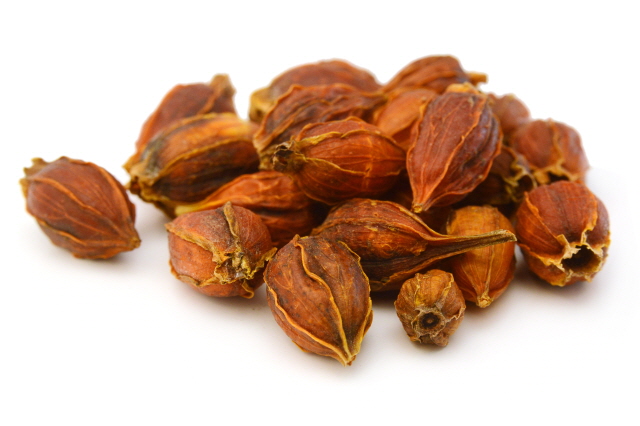
The Formula Could Be Versatile By Adding and Removing Herbs
By Ju Bong Kang, KMD
Action Mechanism and Diagnosis
Zhizixhi-Tang has the functions of clearing away the fire-evil of the triple-energizer, cooling blood, arresting bleeding, resolving toxicity and treating jaundice and edema caused by fever and dampness-heat, feeling of oppression over the chest due to deficiency-fire, and feverish sensation with restlessness in the hands and feet.
In addition, it controls various types of bleeding symptoms, including nosebleeds and hematuria, and has efficacy in treating high blood pressure, especially with neurological symptoms.
Zhizi, the main drug of this prescription, has a light and clean character, so when treating the pattern of heat and fire, the method of purging down by the property of bitter and cold is used, as well as the method of venting them through the superficies, so it reduces the consumption of body fluid in the process of antipyretic.
Zhizichi-Tang has its derivative prescriptions such as Zhizi-Gancao-Tang, which adds Gancao to Zhizichi-Tang, improves symptoms of short breath or breathing disorder along with symptoms of Zhizichi-Tang; adding Gancao and Huangbai to this prescription and subtracting Xiangchi, Zhizi-Baipi-Tang recovers urticaria, skin flare, pruritus, conjunctivitis, keratitis, and iritis, etc.
Adding hou po and zhi shi to this becomes Zhizi-Houpo-Tang, which relieves hyperacidity, gastric ulcers, hepatitis, cholelithiasis, and cholecystitis. When Ganjiang is added and Xiangchi is removed, it becomes Zhizi-Ganjiang-Tang, which is used in patients of deficiency syndrome with a thin and feeble pulse, whose symptoms include neurosis, dermatitis, zoster, hyperacidity, gastrointestinal inflammation and ulcers.
Zhizi-Houpo-Tang, which excludes Xiangchi from Zhizichi-Tang and adds Houpo and Zhishi, is only effective for neurosis, insomnia, restlessness, jaundice due to hepatocirrhosis, and ascites in patients with a symptom of the fullness of the chest and abdomen. In addition, when using various other prescriptions, including Wendan-Tang, Guipi-Tang, and Xiangsu-San, small or large amounts(20 to 40g) of Zhizi are often added to these prescriptions to relieve symptoms such as anxiety, insomnia, neurological symptoms, and high blood pressure.
In this prescription, Zhizi, the main, becomes the monarch drug, and Xiangchi becomes the minister drug. Zhizi is bitter and cold in property and has functions of clearing heat, purging fire-evil, promoting diuresis, detoxifying toxicity, cooling blood, and stopping bleeding. It relieves symptoms such as oral inflammation, esophagitis, chest pain, inflammation and ulcers in the digestive tract and the resulting pain, jaundice, pruritus, irritability, sleeplessness, atopic dermatitis, nosebleed, bloody urine, and so on. Xiangchi, which is bitter, pungent, and cold in property, has functions such as keeping the adverse qi downwards, regulating the middle energizer, expelling superficial evils, alleviating mental depression, and eliminating vexation. It improves minor symptoms of cold and fever, headache, nausea, heart and chest uneasiness, insomnia, etc.. Regarding the relationship between Zhizi and Xiangchi, when Zhizi, whose quality is light and float, lets out and dissolves heat-evil, the stomach-qi is also lifted together to cause vomit, and Xiangqi can calm down.
In diagnosis, the characteristics of Zhizichi-Tang are often vexation over the chest, accumulated pain in the chest, and constructed feeling over the chest. Epigastric softness appears in the abdominal diagnosis, and the abdomen is mild. The fur is thin or yellow, the tongue color is red, and the pulse is rapid but sometimes slow or normal. Patients with Zhizichi-Tang are often sensitive to nerves or have neurological symptoms such as insomnia and anxiety.
Contents of the Source Text, Shang Han Lun
- When asthenia-restlessness and sleeplessness are severe after sweating, vomiting, and diarrhea, if the patient tosses and turns and feels irritable over the chest, Zhizichi-Tang treats it.
- After using purgative for sweating symptoms, if the patient experiences a fever sensation accompanied by restlessness and a heart-choked feeling, Zhizichi-Tang treats it.
- When a patient in Yangming-disease has symptoms such as floating and tense pulse, dry throat, bitter mouth, fullness of the abdomen, rapid respiration, fever, sweating, no aversion to coldness but aversion to warmness, and heavy sensation of the body, if a perspiration treatment is implemented, it causes jump, restlessness, delirium; if a heated needle is acupunctured to the patient, it causes fear, irritable, and sleepless; if purgative is used, the patient’s stomach becomes empty to have the exterior-qi shake the chest to be vexatious, and coating on the tongue takes place. Zhizichi-Tang treats it.
Applications and Indications
Jaundice, gallbladder inflammation, esophagitis, gastric acid hyperplasia, stomachache, oral inflammation, toothache, chest pain, obstructed sensation in the chest, restlessness, irritable fever, anxiety, hematemesis, bloody discharge, psoriasis, atopy, eczema, various dermatitis, hypertension, etc.
Distinction
Shaocaihu-Tang: In Shaocaihu-Tang, there is a sign of fullness and oppression over the chest and hypochondria, whereas Zhizichi-Tang has a vexation over the chest, causing discomfort and uneasiness. Shaocaihu-Tang’s heat alternates episodes of chills and fever, but Zhizichi’s heat burns continuously. While Shaocaihu-Tang has an epigastric hardness, Zhizichi-Tang is soft and has no lumps in the epigastrium; it goes in easily when pressed.
<Ingredients>
|
Zhizi |
bitter, cold |
梔子 |
4g |
|
Xiangchi |
bitter, cold |
香豉 |
4g~20g |
































